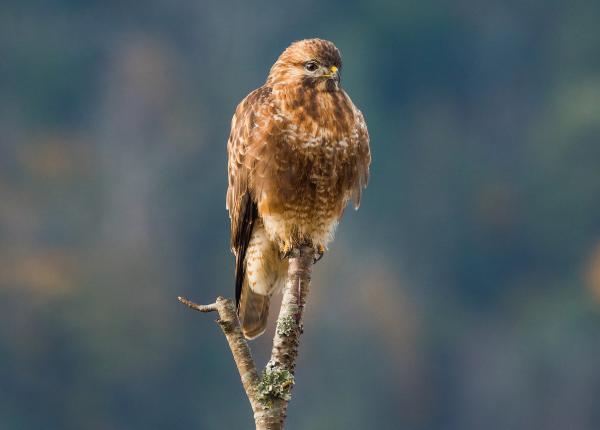How The Peregrine Fund is Helping
Though The Peregrine Fund doesn't work directly with Himalayan Buzzard, our efforts in scientific research, habitat conservation, education, and community development help conserve raptors around the world. We also supply literature to researchers from our avian research library, which helps scientists the world over gather and share important information on raptor conservation. We also run the Global Raptor Impact Network which gives raptor researchers tools to more efficiently conduct their own studies while contributing to a global program. GRIN also provides citizen scientists a way to participate in raptor science and conservation.
Where They Live
True to its name, the Himalayan Buzzard is found mainly in the Himalayas, including in the countries of Nepal, Bhutan, India, and China, among others. They prefer open habitats including fields with few trees and wetland areas. They are a high elevation species, and are usually found from between 3000 m to 4300 m within their range.
Why They Need our Help
The Himalayan Buzzard is categorized as a species of Least Concern. However, little is known about this species and, because it was recently split from the Common Buzzard, not much research has been done about its threats or habits.
What They Eat
Sadly, very little information is known about what this beautiful buzzard eats or how it hunts. It is though to prey on small birds, rodents, some reptiles and invertebrates.
Nests, Eggs, and Young
If you thought very little is known about the diet of this raptor, you may be surprised to learn that scientists know even less about their nesting and breeding habits. We know they build stick nests, which they often place on ledges of cliffs.
Himalayan Buzzard and the World Center for Birds of Prey
The World Center for Birds of Prey offers fun ways to learn about birds of prey. Interactive activities, tours, interesting videos and a children's room with activities from coloring sheets to quizzes to costumes await you. At our visitor center, you can see many hawks up close and learn about the wonderful and interesting adaptations they have in order to survive in their respective habitats.
References:
del Hoyo, J., N. Collar, and J. S. Marks (2020). Himalayan Buzzard (Buteo refectus), version 1.0. In Birds of the World (J. del Hoyo, A. Elliott, J. Sargatal, D. A. Christie, and E. de Juana, Editors). Cornell Lab of Ornithology, Ithaca, NY, USA. https://doi.org/10.2173/bow.combuz9.01









